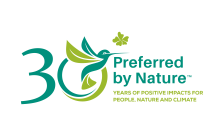Timber Risk Score: 15 / 100 in 2017. The Timber Legality Risk Assessment contains an evaluation of the risk of illegality in Colombia for five categories and 21 sub-categories of law. We found:
- Specified risk for 18 sub-categories.
- Low risk for 2 sub-categories.
- No legal requirements for 1 sub-category.
This page provides an overview of the legality risks related to timber produced in Colombia.
51.3 % (58.5 million ha) of Colombia is covered by forests of which:
- About 14% is primary forest
- About 85% is naturally-regenerated forest
- About 1% is planted forest
Roundwood production totalled 12.7 million m3 in 2015. The forestry sector (including wood processing and pulp and paper) contributed USD 1.8 billion to the economy in 2011, which was nearly 0.6% of the GDP.
Several legality risks are present in Colombian timber supply chains. The risks relate to legal rights to harvest, taxes and fees, timber harvesting activities and trade and transport. Companies sourcing timber from Colombia should take care to ensure the risks identified are not present in their supply chains, or have been sufficiently mitigated.
Score: 39 / 100 in 2021
Rank: 87 out of 180 countries in 2021
Restrictions on log exports from natural forests. Only roundwood from planted forests can be exported. Restriction have not been well enforced, and large amounts of logs are still exported.
There are currently no armed conflicts in Colombia according to the Council on Foreign Relations' Global Conflict Tracker
According to the Uppsala Conflict Data Program there were 1401 deaths from 2010-2017.
FSC Certified Forest Area: 151,936 hectares (3 January 2019)
Information Gathering
Timber sources
- Find out the different sources of legal timber
- Determine which source type your timber comes from
| Timber source | Description of source type |
|---|---|
|
Natural forest within protected areas and on uncultivated land |
Timber from natural forest within protected areas and on uncultivated land (state-owned property) |
|
Natural forest within collective territory |
Timber from natural forest within collective territory (collective title) |
| Natural forest on private property | Natural forest on private property |
| Forest plantation or agroforestry system on private property | Timber from forest plantations or agroforestry systems on private property |
Risk Assessment
Risk assessment summary
|
Legal rights to harvest
|
|
Taxes and fees |
|
|
Timber harvesting activities
|
|
|
Third parties' rights
|
|
Trade and transport |
|
Risk Mitigation
Mitigate the risks in your supply chain
- Learn which actions we recommended to mitigate the risks associated with the timber sources from Colombia.
Source Certified Materials
NEPCon believes that third party certification (for example FSC and PEFC certification) can provide strong assurances of the legality of the products they cover. Companies seeking to mitigate the risks of sourcing illegal timber should seek to purchase third party certified materials wherever possible.
While the European Timber Regulation does not include an automatic “green lane” for certified products, it does recognise the value of certification as a tool for risk assessment and mitigation. The European Commission says that companies “may rate credibly certified products as having negligible risk of being illegal, i.e. suitable for placing on the market with no further risk mitigation measures, provided that the rest of the information gathered and the replies to the risk assessment questions do not contradict such a conclusion.”
For more information on using certified materials in your due diligence, including how to assess whether a certification system meets EUTR requirements, see the page on Certification and Due Diligence.
Mitigation recommendations
Below is a summary of recommended actions to mitigate the risks associated with timber sources from Colombia.
1. Fully map your supply chain
- Our supply chain mapping tool can help you do this.
2. Obtain and verify documents
- Forest level documents
- Record of the plantation before the ICA (commercial plantation)
- Administrative Deed from the Regional Autonomous Corporation of the Administrative Area (protective-productive plantation)
- Ruling number or Home Office Administrative Order that declares the Town Council (indigenous community forest) of Community Council (Afro-descendent community forest)
- Certificate of Liberty and Tradition, rental contract, joint venture accounts, loan agreement, public deed etc. for land tenure
- Forest management plan (plantations that have a CIF)
- Maps showing protected areas and the area of harvest and protected areas where harvesting is prohibited
- Water concession, one-time forest harvesting, discharge, quarrying, and riverbed occupation permits, where relevant
- Check whether the Organisation is listed in the Unified Register of Environmental Offenders (Registro Único de Infractores Ambientales, RUIA). If they are, request documents proving the status of the sanction and consult the Environmental Authority
- Certification of the community representative that approves the forestry exploitation (issued by the Home Office) in collective territory
- Unified National Laissez-Passer forms to transport biodiversity specimens (Salvoconducto Único Nacional para la movilización de especímenes de la diversidad biológica, SUN)
- Tax related documents
- Receipts for payments of harvest related royalties, taxes, harvesting fees and other charges (any volumes, species, and qualities in sales and transport documents shall match the paid fees)
- Sales invoices (verify that VAT is charged and that sales prices are in line with market prices)
- The Organisation's Unified Tax Register (Registro Unico Tributario, RUT) to verify which taxes apply depending on its business activity
- Health and safety related documents
- Documented workplace safety and health system and plans
- Employment related documents
- Employment contracts. Check that the salaries are at least minimum wage
- Worker insurance documents
- Payment receipts of salaries
- Workers payment form. Confirm that contributions to the social security system are up to date
- Trade and transport documents
- Trade permits
- Export documents
- Sales documents and customs declarations (check that products are correctly classified (species, quantities, qualities etc.)
- CITES export, import and re-export certificates issued by competent authorities (CITES Management Authorities) for CITES species
- International transport documents, commercial invoices and health and phytosanitary inspection certificates issued by the National Institute for the Control of Medicines and Food (Certificados de inspección sanitarios y fitosanitarios expedidos por el Instituto Nacional de Vigilancia de Medicamentos y Alimentos, INIVIMA) or the Colombian Agricultural Institute (Instituto Colombiano Agropecuario, ICA)
- ICA transport permit (Remisión de movilización del ICA) for small plantations
- Single National Laissez-Passer form (Salvoconducto Único Nacional) to transport biodiversity specimens
3. Consult with stakeholders
- The Colombian Agricultural Institute (ICA) confirms the plantation has been recorded properly
- Authorities confirm the forest management plan has been approved according to the legally prescribed process
- Tax authorities confirm that applicable sales and income and profit taxes have been paid
- Neighbours and environmental NGOs confirm that protected areas, reservations, protected species and hunting are not harvested/impacted
- The Occupational Hazards Insurer confirms the legal status of the Workplace Safety and Health System Management
- The Ministry of Labour confirms that there have been no labour-related complaints or violations
- The Indigenous Organization of Colombia or the Black Community Process confirms there have been no complaints or claims related to violations of the communities’ rights
- In case, consult
- Community representatives confirm there have not been any violations of the communities’ rights (in cases where there are indigenous communities (both indigenous and African-descendant) bordering the exploitation area)
- The Home Office confirms that there are no outstanding complaints or claims related to violations of the communities’ rights
4. Carry out on-site verification
- Confirm that the area and species stated in the administrative act granting harvest permission match those of the harvesting site
- Confirm that the contents of the harvesting plans are adhered to in the field, including: that harvesting is conducted within authorised boundaries, harvesting is not carried out where prohibited and that tree species or selected trees found within the FMU for which felling is prohibited are listed in operational plans
- Confirm that the harvesting site matches the site stated on the plantation registry (for plantations).
- Confirm that any restrictions on the harvest of natural forest or protective-producer plantations stated by the Administrative Act granting harvest permission are respected
- Confirm that procedures for managing protected areas and species are followed
- Confirm that environmental restrictions are complied with when the plantation or natural forest is subject to usage and harvesting restrictions (as outlined in the Environmental Authority’s Administrative Act)
- Confirm that the company has developed and implemented a Workplace Safety and Health System and plans
- Confirm that personal protection equipment is maintained and used
- Confirm that the classification of origin, species, volume and quality is correct
- Confirm that child and forced labour are not used
5. Conduct targeted timber testing
- Conduct timber testing on samples of purchased material to verify the species or origin of timber, where appropriate
6. Avoid / do not buy
- Avoid products that include materials bought at spot- and/or open-markets












